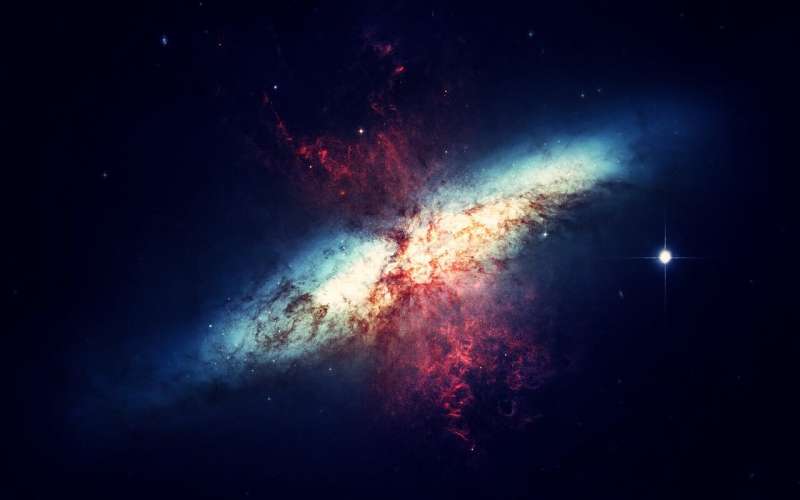May 10, 2019 report
A mathematical method for calculating black-hole properties from gravitational-wave data

Sean McWilliams, an assistant professor at West Virginia University, has developed a mathematical method for calculating black hole properties from gravitational wave data. He has written a paper describing his method and posted it on the arXiv preprint server. The paper has been accepted for publication in Physical Review Letters.
It has been two years since a team working with the LIGO detector made worldwide headlines by announcing that they had detected gravity waves. Since that time, workers there and elsewhere have continued the work, looking to better understand black holes, merging neutron stars, and ultimately, gravity itself. But such work has been hindered in one respect—the source of the gravity waves, merging black holes, is so complicated that it was thought the signals they generate could not be interpreted mathematically. Instead, scientists have been interpreting the signals by comparing them to signals generated using computer simulations.
In this new effort, McWilliams (who was a LIGO Scientific Collaboration Council member) claims to have developed mathematical formulas that can be used to calculate the signal. His calculations involve using the innermost stable circular orbit (ISCO), an area around a black hole that is approximately three times the distance of the event horizon, where an object can orbit the black hole without falling in. ISCO has historically been challenging for astrophysicists seeking a mathematical solution to the problem.
McWilliams explains that he sidestepped the problem by simply leaving out the final state of the merged black holes. He instead used general relativity to calculate what would happen to a small mass as it spun into, and ultimately perturbed, the final black hole that resulted. That, he notes, allowed him to calculate the signal from the ISCO and inward. His analytical method uses two formulas that he created to study the gravity waves that emerge from colliding black holes. He claims that the results are as accurate as those provided by simulations. He also suggests they might be used in future tests of general relativity and for analyzing data from LIGO as researchers observe more black hole collisions. More work by others in the field is required before the claims McWilliams has made can be verified.
More information: Sean T. McWilliams. Analytical Black-Hole Binary Merger Waveforms, arXiv:1810.00040 [gr-qc]. arxiv.org/abs/1810.00040
Journal information: arXiv , Physical Review Letters
© 2019 Science X Network





















